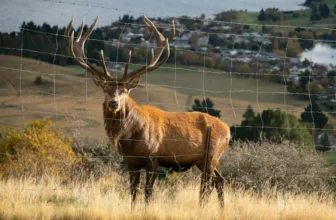
Promotion Links:
- https://outfitternepal.com/trip/everest-base-camp-trek
- https://outfitternepal.com/trip/everest-base-camp-luxury-trek
- https://outfitternepal.com/trip/annapurna-base-camp-trek
- https://outfitternepal.com/trip/manaslu-circuit-trek
Travel safety: current situation & what to expect
After the demonstrations earlier this September, Nepal is open and welcoming travelers from all over the world. This unfortunate event brought temporary curfews and lockdowns in Kathmandu, and a few other urban centers to ensure the safety of citizens and visitors.
On September 13, the Nepal Tourism Board and the Trekking Agencies’ Association of Nepal officially announced that peace, stability, and normalcy have been fully restored across the country. Government authorities confirm that major tourism services including flights, hotels, trekking routes, and emergency facilities are operating smoothly.
For visitors it is important to know that popular trekking destinations such as Everest, Annapurna, Langtang, and Manaslu were never directly affected by the demonstration and remain safe to explore.
Tourist hubs like Pokhara continue to operate peacefully. But, it is recommended to stay connected with the Embassy for the latest information, while also following trusted news sources and updates from the tourism board to ensure safe and informed travel.
Similarly, booking with licensed guides and sticking to official trekking routes is strongly recommended for both safety and legal compliance.
A Nation of Resilience: Why Nepal’s Hospitality Shines Through Challenges
Nepal’s greatest treasure has always been its people. Hospitality is deeply rooted in Nepali culture, and visitors often describe feeling more like family than outsiders. Even when the country faces unexpected challenges, the warmth of the people rarely falters.
The Nepal Tourism Board has repeatedly emphasized that the tourism sector continues to prioritize safety, comfort, and genuine care for guests. Additionally, hoteliers, guides, and tour operators consistently adapt to ensure travelers enjoy their stay, no matter the circumstances.
This spirit of resilience can be seen across the country, from bustling Kathmandu guesthouses to small family-run homestays in remote villages. For many communities, welcoming travelers is not just about business; it is about preserving culture, building friendships, and showing the world what Nepali kindness means in practice.
Even during times when tourism numbers dipped, service standards remained high, reflecting a deep cultural commitment rather than just economic necessity. For anyone considering Nepal this resilience offers reassurance to their safety and an enhanced travel experience.
As a traveler, you can expect open arms, genuine smiles, and a community determined to make your journey safe, meaningful, and unforgettable.
Trekking with Confidence: Essential Safety Tips for Your Himalayan Adventure
Trekking in Nepal is a dream for many, but preparation and the right guidance are what make it safe and enjoyable. Hiring a licensed guide is not just an option, it is now a legal requirement in most national parks and conservation areas.
Beyond meeting regulations, guides bring local knowledge, cultural insights, and invaluable expertise in navigation and safety. They know how to spot risks on the trail, choose the right pace, and act quickly in emergencies, making them your best safeguard in the high mountains.
Key Safety Considerations for Trekkers:
Altitude Awareness:
- Many Himalayan routes exceed 3,000 meters, increasing the risk of Acute Mountain Sickness (AMS).
- Prevent AMS by ascending gradually, staying well-hydrated, and scheduling acclimatization days.
- Licensed guides are trained to detect early symptoms such as headaches, dizziness, or nausea and can arrange immediate descent if required.
- Following their professional advice helps ensure your trek remains safe and enjoyable.
Comprehensive Travel Insurance:
- Choose a policy that covers trekking at high altitudes, emergency medical care, and helicopter evacuation—a critical service in remote mountain regions.
- Confirm with your insurance provider that these inclusions apply, as standard travel insurance often excludes high-altitude rescue.
- Having reliable coverage offers peace of mind, knowing that you’re protected if unexpected challenges arise.
With proper planning, the support of experienced guides, and the right insurance coverage, trekking in Nepal transforms from a risky adventure into a deeply rewarding experience filled with confidence and unforgettable moments.
Beyond Safety: What Makes Nepal a Destination Unlike Any Other?
While safety is the first concern for many travelers, what truly sets Nepal apart is the wealth of experiences waiting beyond those practicalities. This is a land where the highest mountains in the world meet vibrant cultural traditions and diverse ecosystems.
Whether you’re standing beneath the snowcapped peaks of the Himalayas or exploring the subtropical plains of the Terai, Nepal offers journeys that go far deeper than the typical travel experience.
Each region brings its own flavor, from Buddhist monasteries echoing with chants to ancient Hindu temples alive with festivals and rituals.
For adventure seekers, Nepal’s treks are unmatched. The classic Everest and Annapurna routes promise iconic views and cultural encounters, while circuits like Manaslu and Langtang offer quieter trails with just as much beauty.
Those looking for wildlife encounters can head south to Chitwan or Bardia National Park, where safaris reveal rhinos, elephants, and even the elusive Bengal tiger.
Cultural travelers will find inspiration wandering the UNESCO listed Durbar Squares of Kathmandu Valley, taking part in homestays with Indigenous communities, or visiting the birthplace of the Buddha in Lumbini.
Each experience is carefully connected to Nepal’s heritage and natural wealth, giving travelers a sense of authenticity that few destinations can match.
The People of Nepal: A Culture of Warmth and Welcoming Spirits
At the heart of every journey to Nepal is not only the scenery but also the people who make visitors feel at home. Nepali culture places deep value on kindness, generosity, and respect, and these values shine through in daily interactions.
Whether it’s a guide sharing a personal story along the trail, the experience feels personal and heartfelt, reminding travelers that every journey is deeply personal and filled with connection.
In the rural villages, families often welcome visitors with home-cooked meals, turning a simple stop into a moment of genuine cultural exchange. Back in Kathmandu, even a shopkeeper’s warm smile can make you feel instantly at home.
Together, these everyday gestures reflect the deep-rooted kindness and connection that travelers remember most about Nepal. Hospitality here goes beyond courtesy; it reflects a way of life rooted in community and a genuine desire to share Nepal’s traditions with the world.
Travelers often speak with affection about the friendships they form in Nepal. A solo traveler on the Mardi Himal Trek shared that her guide Kapil and porter Pradeep “made her feel completely supported,” checking on her regularly and sharing laughter along the trail.
Jane, who trekked the Manaslu Circuit with Outfitter Nepal, said her guide Ravi was “amazing and highly professional,” turning a challenging trek into a safe and unforgettable experience. A group trekking the Annapurna Base Camp route recalled how their guides and porters “treated them like family,” adjusting the pace and ensuring everyone felt cared for throughout the journey.
These experiences highlight what makes traveling in Nepal so special. From a guide’s encouragement to shared meals in teahouses and simple acts of kindness, the most memorable part of every trek is the genuine human connection that travelers carry home.
Hearing from fellow travelers builds trust because it reflects experiences that are both genuine and repeatable. The kindness of the Nepali people is not an occasional surprise but a defining part of the country’s character.
For those considering a trip, these stories reassure that while the landscapes are unforgettable. It is the people of Nepal who leave the deepest impression, turning every journey into a story worth telling.
Your Journey to Nepal: A Step-by-Step Practical Guide
Planning your journey to Nepal is simpler than it seems, especially when you know what to expect. From visas to transportation and local currency, the country’s travel systems are designed to make your adventure as smooth as possible.
Whether you’re trekking in the Himalayas or exploring the cultural streets of Kathmandu, a little preparation goes a long way. Understanding basic logistics like how to get around, where to exchange money, and what to pack ensures that once you arrive, you can focus entirely on experiencing Nepal’s breathtaking beauty and heartfelt hospitality.
With these essentials mentioned below you would be sorted for your journey through Nepal’s mountains, temples, and warm-hearted communities which would be effortless and truly unforgettable.
- Visa: Available on arrival at Tribhuvan International Airport or online via e-visa; valid for 15, 30, or 90 days.
- Currency: Nepalese Rupee (NPR); carry cash for rural areas and exchange only at authorized counters.
- Transportation: Domestic flights link trekking hubs like Lukla and Pokhara; tourist buses and jeeps are best for overland routes.
- City Travel: Taxis are common and make sure to negotiate fares beforehand; but we arrange private transfers.
- Preparation Tips: Bring passport photos for permits, pack for mixed climates, and download offline maps.
- Connectivity: Local SIM cards are affordable and available at the airport or in city shops.
Ready to Embark? What Makes Nepal the Perfect Place for Your Next Adventure
Nepal is more than a destination, it is an experience that blends safety, adventure, and cultural depth in ways few countries can match. Despite recent challenges, the tourism sector has proven its resilience, with guides, hotels, and communities working tirelessly to ensure visitors feel secure and welcome.
Trekking routes remain open, cultural sites are alive with festivals, and national parks continue to offer unforgettable wildlife encounters. For travelers who may still feel uncertain, it’s worth remembering that Nepal’s reputation for hospitality is not just a phrase, it is a lived reality that has guided millions of visitors through both calm and turbulent times.
What makes Nepal truly special is the harmony it offers between adventure and authenticity. You can trek beneath the world’s highest peaks, cross hanging bridges draped in prayer flags, and witness landscapes that stir the soul.
Yet, beyond the mountains lies a deeper beauty which is sharing meals with village families, observing ancient rituals, and feeling the quiet spirituality that defines daily life. Travelers often find that it’s the people, not just the places, that leave the strongest impression.
With our expert team, reliable safety standards, and carefully designed itineraries, your journey in Nepal will blend thrill and tranquility seamlessly. It’s a destination that not only inspires discovery but embraces you with genuine warmth at every turn.
If you’ve been considering Nepal, there has never been a better time to go. The mountains are waiting, the culture is thriving, and the people are ready to welcome you with open arms.
Your adventure here will not only be safe and memorable; it will be transformative, offering moments that stay with you long after you’ve returned home. Nepal awaits, and your story here is ready to begin.
Author: Puja Pulami
Bio: I’m Puja Pulami, an SEO content writer passionate about bringing destinations to life through engaging storytelling. I specialize in creating travel content that blends creativity with SEO strategy, helping travel brands connect with readers and enhance their online presence.






